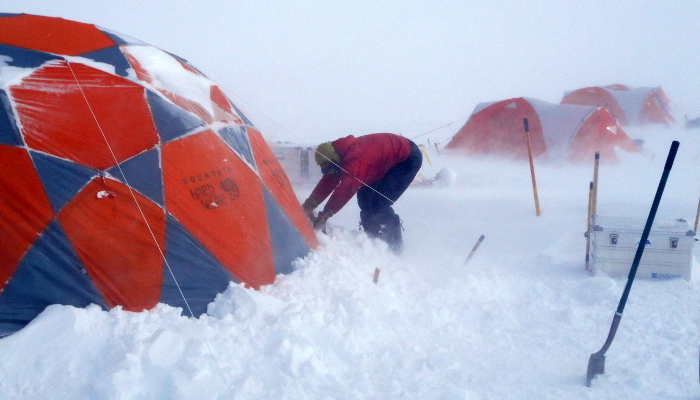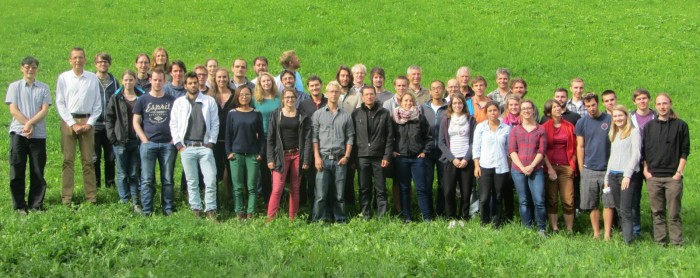During the last ice age*, ~70,000 to 20,000 years ago, the climate was much colder in Europe. As a result, the northern part of Europe was fully covered by the Fennoscandian (a.k.a the Scandinavian ) ice sheet, which extended up to the British Isles and some parts of Poland and Germany. In central Europe, the Alps were also almost fully glaciated. The storage of all this ice on the continent lower ...[Read More]
Image of the Week – Changes in the Greenland Ice Sheet Documented by Satellite
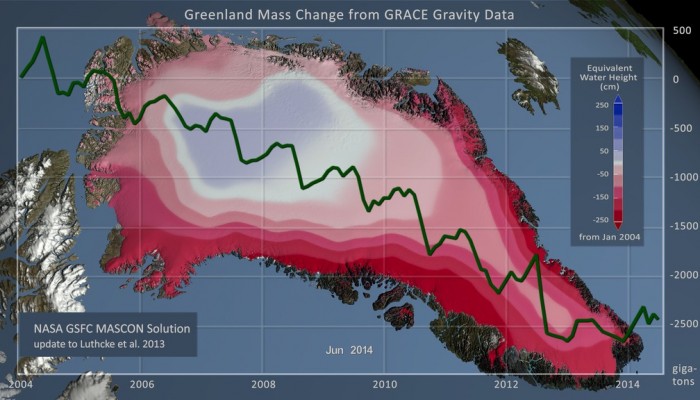
Monitoring the changing ice mass of the Greenland Ice Sheet provides valuable information about how the ice sheet is responding to changing climate, but how do we make these measurements over such a large area of ice? Using NASA’s GRACE satellites (twin-satellites flying in formation) it is possible to make detailed measurements of the Earth’s gravitational field. As ice is gained/lost from ...[Read More]
Image of the Week — Greenland ice sheet and clouds
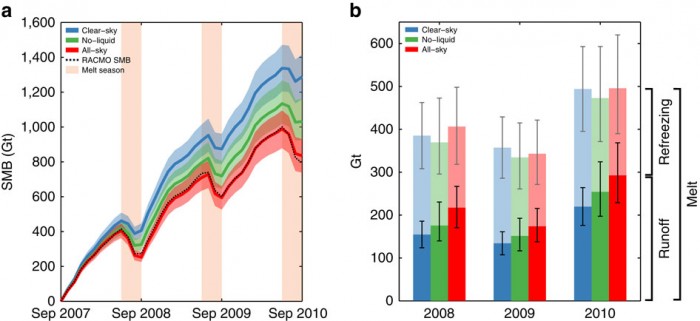
A new study combining satellite observations and model simulations shows that clouds increase meltwater runoff in Greenland by one-third compared to a cloud-free scenario. Precipitation effects not considered, clouds above the Greenland ice sheet reduce its Surface Mass Balance (SMB) [red in figure] compared to clear-sky conditions [blue in figure]. Because clouds trap the outgoing radiation from ...[Read More]
Image of the Week: Ice Sheets in the Climate

Ice sheets play a central role in the climate system. They store significant amounts of fresh water and are the conveyor belts for transporting snow that accumulates on land back into the oceans. The figure above shows a few of the ice-climate interactions. In the figure below (click on the figure for full resolution) we see the complete picture of the processes taking place between ice sheets, so ...[Read More]
Image of the Week — Ice Sheets and Sea Level Rise (from IPCC)

Context On the eve of the COP21, it is of paramount importance to recall how strongly the cryosphere is affected by Climate Change. Today, we present the impact of melting ice on sea level rise, as it is presented in the latest assessment report of the Intergovernmental Panel on Climate Change. Quick facts -Since 1992, the Glaciers, Greenland and Antarctic Ice Sheets have risen the sea level by 14 ...[Read More]
Image of Week: Inside the Greenland Ice Sheet
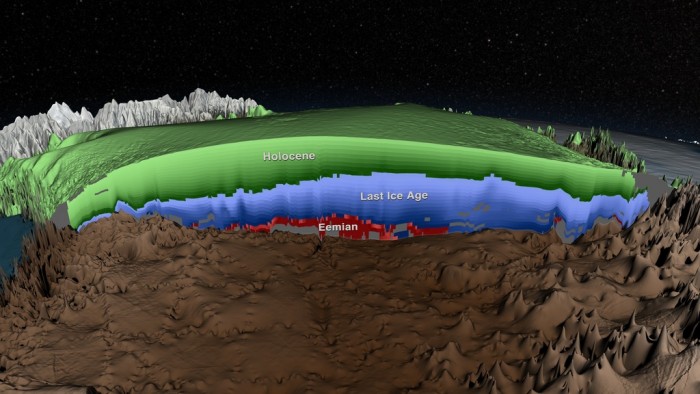
The image shows a cross section of the Greenland Ice Sheet, where a recent study by MacGregor et al. have mapped the layers imaged by radar. Thanks to ice core measurements the age of the layers have been determined, and in the image the layers from the Holocene period (the past 11.700 years) are shown in green. The ice formed during the last ice age, that spanned 11.700 to 115.000 years ago are c ...[Read More]
Riding the Storm: The Arctic Circle Traverse 2015
In the morning on the 19th of May, we – the Arctic Circle Traverse 2015 – found ourselves in a great dilemma; to stay or to go? On our check-in conversation with the KISS crew, we were informed that an east front from Kulusuk was expected to hit our location up on the ice sheet sometime in the afternoon. The relatively low winds that we were experiencing would get stronger, and the visibility woul ...[Read More]
Image of the Week : SAFIRE team getting ready to drill in Greenland

How do you get a hot water drill onto an ice sheet? The Subglacial Access and Fast Ice Research Experiment (SAFIRE) uses a hot water drill to directly access and observe the physical and geothermal properties where the ice meets rock or sediment at the glacier-bed interface. Here, SAFIRE principal investigator Bryn Hubbard and post-doc Sam Doyle help fly in the drill spool at the start of the Summ ...[Read More]
Karthaus Summer School 2015
After a train, the London Underground, another train, a flight, three more trains and a taxi (shared with people I had met on my way); I had arrived in a small Alpine village in the very north of Italy. The reason for this rather convoluted journey? To attend the Karthaus Summer School on ice sheets and glaciers in the climate system. I’m pleased to say it was definitely worth the trip getting the ...[Read More]


